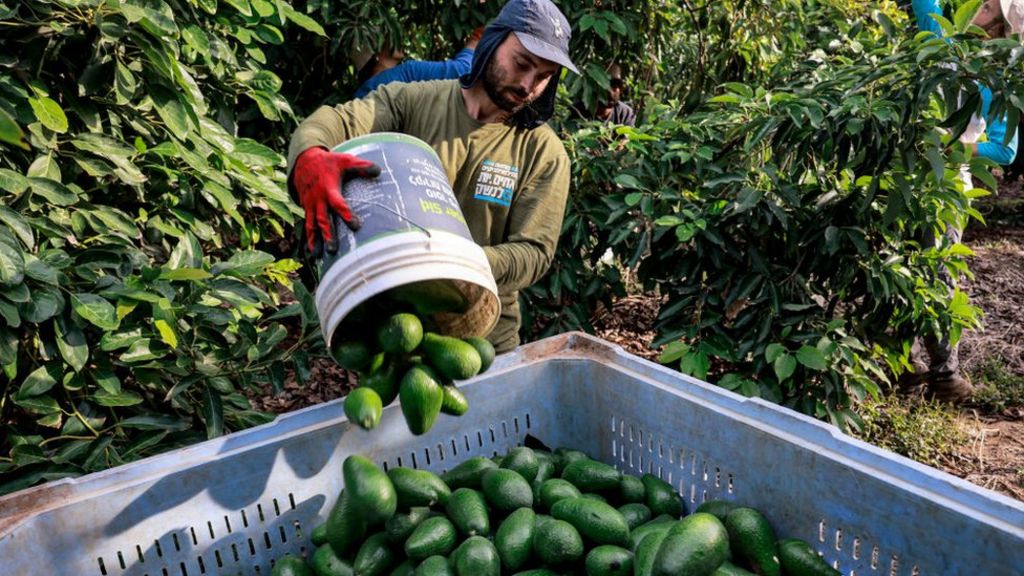The federal government tabled its Fall Economic Statement (FES) on Monday, proposing $100 billion in stimulus spending over the next three fiscal years, hoping to create one million jobs and drive an “accelerated economic recovery.”
The FES claims Canada’s economy would look a lot worse without the Liberals’ interventions since the start of the COVID-19 pandemic. The finance department estimates that without federal subsidy, credit and benefit programs, real GDP would have been 4.6 per cent lower this year and 4.4 per cent lower in 2021.
That’s part of the rationale for the government’s continued spending. “This crisis demands targeted, time-limited support to keep people and businesses afloat and to build our way out of the COVID-19 recession,” said the prepared text of a speech Finance Minister Chrystia Freeland will deliver in the House of Commons Monday afternoon. So the FES doesn’t set a new maximum deficit or debt target, instead promising that the government will start to wind down its stimulus measures based on indicators like employment levels and hours worked. This year, Ottawa will run a $381.6-billion deficit, with spending exceeding revenues by $121.2 billion next fiscal year.
For Canada’s innovators and small- and medium-sized businesses, the government unveiled some key policies, with details on changes to how stock options will be taxed, an extension of wage and rent subsidies, and another step towards a digital-services tax. Here are seven ways the economic statement will affect the innovation economy.
Stock options
What: Employees will be taxed at the capital-gains rate for the first $200,000 worth of shares for which they exercise stock options each year; anything above that amount will be taxed at the regular personal-taxation rate—the share of income individuals typically owe, based on their tax bracket.
How much: The government expects to collect an additional $200 million annually from the change.
The fine print: The cap will apply to options granted from July 1, 2021 onwards. The government has long promised the measure won’t hurt startups and fast-growing businesses, which the FES notes use options “as a tool for attracting and retaining talent.” It won’t apply to firms with annual gross revenues of $500 million or less. The changes will also exempt Canadian-controlled private corporations: firms incorporated in the country and majority-controlled by residents. Innovation-economy companies often use the structure, which helps them qualify for the highest rates under the federal scientific research and experimental development tax credit.
The context: The Liberals first proposed a stock-option cap during the 2015 federal election, but backed off the plan the following spring, after opposition from tech executives. The government revived the measure in the 2019 budget, promising this time to exempt “start-ups and rapidly growing Canadian businesses.” Innovation-economy executives expressed concern about how Ottawa would design the carve-out, and the size of the cap. A “reasonable number” for the annual limit would be “into the millions before you get taxed,” Sachin Aggarwal, CEO of Toronto-based health-care technology firm Think Research, told The Logic in October 2019. He also called for provisions allowing employees to be able to defer the amounts they owe. Startup staff don’t typically sell their shares until the company exits, so they don’t necessarily have the cash on hand to pay the tax agency, even if exercising their options makes them look wealthier on paper. The FES does not include such provisions.
The bottom line: Employees at many startups, scale-ups and fast-growing firms will indeed be exempted from the new cap, assuaging executives’ fears that the measure would hurt their ability to recruit and keep skilled workers. But staff at some of the country’s biggest tech companies will have to pay more tax on new options—Shopify, BlackBerry, and Ceridian all had more than $500 million in revenue last fiscal year.
The response: “You can’t tax your way to prosperity, so it’s good to see the government has listened to the leaders of Canada’s high-growth tech sector and understands that stock options are used for talent attraction and retention, and should be kept as competitive as possible,” said Benjamin Bergen, executive director of the Council of Canadian Innovators, a lobby group for scale-up firms.
***
Canada Emergency Wage Subsidy
What: The maximum subsidy rate for the Canada Emergency Wage Subsidy (CEWS) program will increase from 65 per cent to 75 per cent starting December 20, all the way to March 13, 2021. The program had started with a maximum subsidy of 75 per cent, before being scaled down in July. The revenue-drop test for program eligibility will now be the same for both the base amount and the top-up amount (a change in an eligible employer’s monthly revenues year over year, or compared to the average of January and February 2020 revenues).
How much: The increase to this subsidy alone is expected to cost the government $14.8 billion. The feds have already dispensed over $50 billion to businesses in CEWS payments to date, and the economic statement estimates a total of $83.5 billion in spending on wage subsidies in 2020.
The fine print: Although the government did not provide an estimate of how many businesses it expected to apply for the CEWS in 2021, it did disclose a provisional estimate for combined spending on the Canada Emergency Rent Subsidy (CERS) and CEWS for the period of April to June 2021, which it expects will exceed $16 billion. It estimated that over 3.9 million Canadian workers have been supported by the CEWS to date.
The context: The CEWS faced some criticism from businesses when it was first introduced because eligible employers were required to have had a 30 per cent revenue decline in any four-week period in which it applied, in order to qualify for what was a 75 per cent subsidy at the time. Tech companies, in particular, argued that revenue losses were not an adequate measure of decrease in business activity, suggesting that the government consider other variables to measure the impact of the pandemic, like declines in billable hours, units shipped, gross bookings or subscriptions. Under new legislation that was ratified in November, any business with a revenue decline would be eligible—the subsidy, however, would still be proportional to revenue losses, but capped at a maximum of 65 per cent. The CEWS is currently set to expire in June 2021, and the economic statement offered no indication the deadline would be extended.
The response: While it welcomed the 75 per cent boost to CEWS, the Canadian Federation for Independent Business (CFIB) noted that when the program was first introduced, firms that had just a 30 per cent revenue loss were eligible for a maximum wage subsidy of 75 per cent. Under the proposed new rules, businesses would need a 70 per cent revenue collapse to qualify. “It is disappointing that the government has not announced further fixes for new businesses and self-employed Canadians, who remain ineligible for nearly all of the key support program,” said CFIB CEO Dan Kelly in a statement.
***
What’s in the FES for small businesses
- The maximum CEWS subsidy rate will increase from 65 per cent to 75 per cent, starting December 20.
- The maximum cap of 65 per cent under the CERS rent-subsidy program will be extended to March 13, 2021.
- The 25 per cent rent subsidy top-up for businesses in lockdown zones like Toronto will be extended to March 13, 2021.
- A new program—the Highly Affected Sectors Credit Availability Program—will provide low-interest loans of up to $1 million for terms of up to 10 years for businesses of all sizes in sectors like tourism, hospitality, hotels, arts and entertainment.
- A special procurement pilot program will launch to open bidding opportunities for Black-owned and -operated businesses.
Rent
What: For eligible businesses needing rent relief, the government will now extend the base subsidy rate of 65 per cent in the Canada Emergency Rent Subsidy (CERS) program by three months, meaning that successful claimants who have experienced an income loss of at least 70 per cent will be guaranteed 65 per cent of their rent until March 13, 2021.
How much: The government expects to spend an additional $2.18 billion on the subsidy extension, in addition to the $2.18 billion it had already allocated to the CERS when it was first introduced.
The fine print: The government had previously announced a 25 per cent rent relief top-up under the Lockdown Support program for businesses affected by a full lockdown, until December 19. That is now being extended to March 13, 2021, meaning that some businesses may be able to receive up to 90 per cent in rent relief for the next three-odd months.
The context: The CERS program was introduced as a substitute for the Canada Emergency Commercial Rent Assistance (CECRA), which was widely considered an inadequate measure to help struggling tenants with rent because it relied on the landlord to apply for government aid on a tenant’s behalf. The government had in fact already spent $1.65 billion on the CECRA prior to the introduction of this new rent-subsidy scheme. The CERS is a direct subsidy program, dispensed on a sliding scale. For example, a loss of revenue of between 50 per cent and 69 per cent would qualify a business for a rent subsidy of 40 per cent + (revenue decline – 50 per cent) x 1.25, while a business that has seen its revenue collapse by 70 per cent or more would receive a maximum subsidy of 65 per cent. The CERS itself only began accepting applications for the first subsidy period of September 27 to October 24 on November 23, but will pay out retroactively. Unlike the CECRA, businesses can apply directly for the CERS through a CRA portal.
***
Sales tax
What: Foreign firms that sell Canadian consumers digital products and services, like smartphone apps or video- and music-streaming subscriptions, or that use domestic warehouses to ship orders to Canadian shoppers, will have to collect and remit the federal sales tax. So will Airbnb and other short-term rental platforms, or their hosts—the FES specifically cites short-term-rental accommodation, leaving it to either the property owner or the platform to take and pass on the tax on rentals in Canada.
How much: The FES estimates the expanded sales-tax measures will bring in a combined $396 million in 2021–22, the next fiscal year, rising to $792 million by 2025–26.
The fine print: The new requirements won’t kick in until next summer. Platforms will have to start collecting and remitting on July 1, 2021, giving the government time for consultations.
The context: Foreign digital platforms aren’t currently required to charge sales tax on many of their sales to Canadian shoppers or streamers. Canadian competitors have argued this puts them at a disadvantage, since consumers end up paying more overall when they buy domestic. Buyers are technically supposed to send the Canada Revenue Agency what they’d owe on their purchases, but few do—in 2017, 120 voluntarily registered entities paid a combined $3.6 million on imported taxable supplies, The Logic reported. Quebec and Saskatchewan already require foreign digital firms to collect and remit provincial sales tax.
***
Digital services tax
What: Ottawa will impose “a tax on corporations providing digital services” starting on January 1, 2022.
How much: The FES estimates the measure will bring in $3.4 billion over the next five fiscal years, rising from $200 million in the last three months of 2021–22 to $900 million for the full 2025–26 fiscal year.
The fine print: There isn’t any. The FES doesn’t provide any details about how much the new digital-services tax (DST) will charge, on what revenues or to which companies it will apply. Instead, it promises more information in the 2021 federal budget.
The context: More than 130 countries are currently negotiating an OECD- and G20-fronted plan to change the way multinational corporations are taxed, aiming to prevent firms from moving profits to lower-tax countries and ensuring they pay taxes where they make their revenues rather than in the countries they’re incorporated. Tech giants are a key target. But in October, the OECD said the group wouldn’t reach a deal this year—and it’s not the first time the process has been delayed. “The government remains committed to a multilateral solution, but is concerned about the delay in arriving at consensus,” the FES states; the new DST it proposes is a stopgap measure until Ottawa can implement whatever deal the OECD-led group reaches. The OECD has warned that governments could provoke trade disputes by introducing such country-specific taxes. During the 2019 federal election, the Liberals proposed a three per cent tax on revenue from online advertising and user data for firms making at least $40 million and $1 billion in Canadian and total revenue, respectively.
The response: Bergen said CCI’s members want clarity on how the sales tax and DST proposals could affect them.
***
The green economy
What: Natural Resources Canada (NRCan) will expand its program of building zero-emission vehicle (ZEV) charging and fuelling stations. The government will also give homeowners up to $5,000 to renovate their properties in energy-efficient ways, and launch a “low-cost loan program” to supplement those grants.
How much: The department will get an additional $150 million over three years for ZEV-charging infrastructure, and $2.6 billion over seven years to fund residential retrofits.
The fine print: The Liberals’ September throne speech promised a 50 per cent tax break and a new fund for companies that develop zero-emission technology. The FES introduces neither. “Targeted action by the government to mobilize private capital will better position Canadian firms to bring their technologies to market, unlocking both the economic and environmental potential of the growing global clean technology market,” it states.
The context: Ottawa says its already funded 433 charging and fuelling stations, and another 800-plus are being built with its backing, at a combined cost of $226.4 million. Experts have told The Logic such infrastructure could help drive ZEV adoption, but have also called for more industry-focused measures if Canadian governments hope to achieve their hopes for a domestic electric car-making industry. Meanwhile, cleantech firms might have expected more from Monday’s plan. “Energy R&D and cleantech innovation are particularly vulnerable” due to the pandemic, an internal presentation prepared for then-NRCan deputy minister Christyne Tremblay warned.
***
The rest
Ottawa will add $250 million in new money over five years to the $3.5-billion Strategic Innovation Fund. It’s already increased the program’s budget during the pandemic, adding $792 million for COVID-19-related R&D and manufacturing projects.
Businesses most affected by the pandemic, such as those in tourism and hospitality, hotels, arts and entertainment, will be able to borrow up to $1 million for up to 10 years via the new Highly Affected Sectors Credit Availability Program. The loans will be federally funded; eligibility criteria and other details will be announced “soon.” Former finance minister Bill Morneau first promised sector-specific support in March.
Share the full article!
Send to a friend
Thanks for sharing!
You have shared 5 articles this month and reached the maximum amount of shares available.
Close
This account has reached its share limit.
If you would like to purchase a sharing license please contact The Logic support at [email protected].
Close
Want to share this article?
Upgrade to all-access now
Close
Share the full article!
Share the full article with your friends. Recipients will be able to read the full text of the article after submitting their email address. They will not have access to other articles or subscriber benefits.
You have shared 0 article(s) this month and have 5 remaining.
Copy Link And Share
Email to a Friend
Share on Social Media
x
The government will also appoint a new taskforce to create an “action plan for women in the economy.” Pandemic-related job losses and the pace of rehiring have left a disproportionate number of women out of work.
Ottawa will put $33 million over three years behind its 50-30 Challenge, announced last month, which aims to increase the share of director and senior management roles at companies, non-profits and academic institutions held by women to parity and by members of underrepresented groups—including racialized people, Indigenous people, people with disabilities, and LGBTQ2 people—to 30 per cent. The money will pay for “diversity-serving organizations” to work with firms and charities on their strategies for improving representation and to create new online resources.
The federal government will also waive interest on its portion of the Canada Student Loans and Canada Apprentice Loans for the 2021–22 fiscal year, at a total cost of $329.4 million. And it’s setting up a new secretariat to “provide child care policy analysis in support of a Canada wide-system,” with a $20-million budget over four years. Ottawa isn’t funding a national program just yet, however.
Source:- The Logic
Source link
Related


























